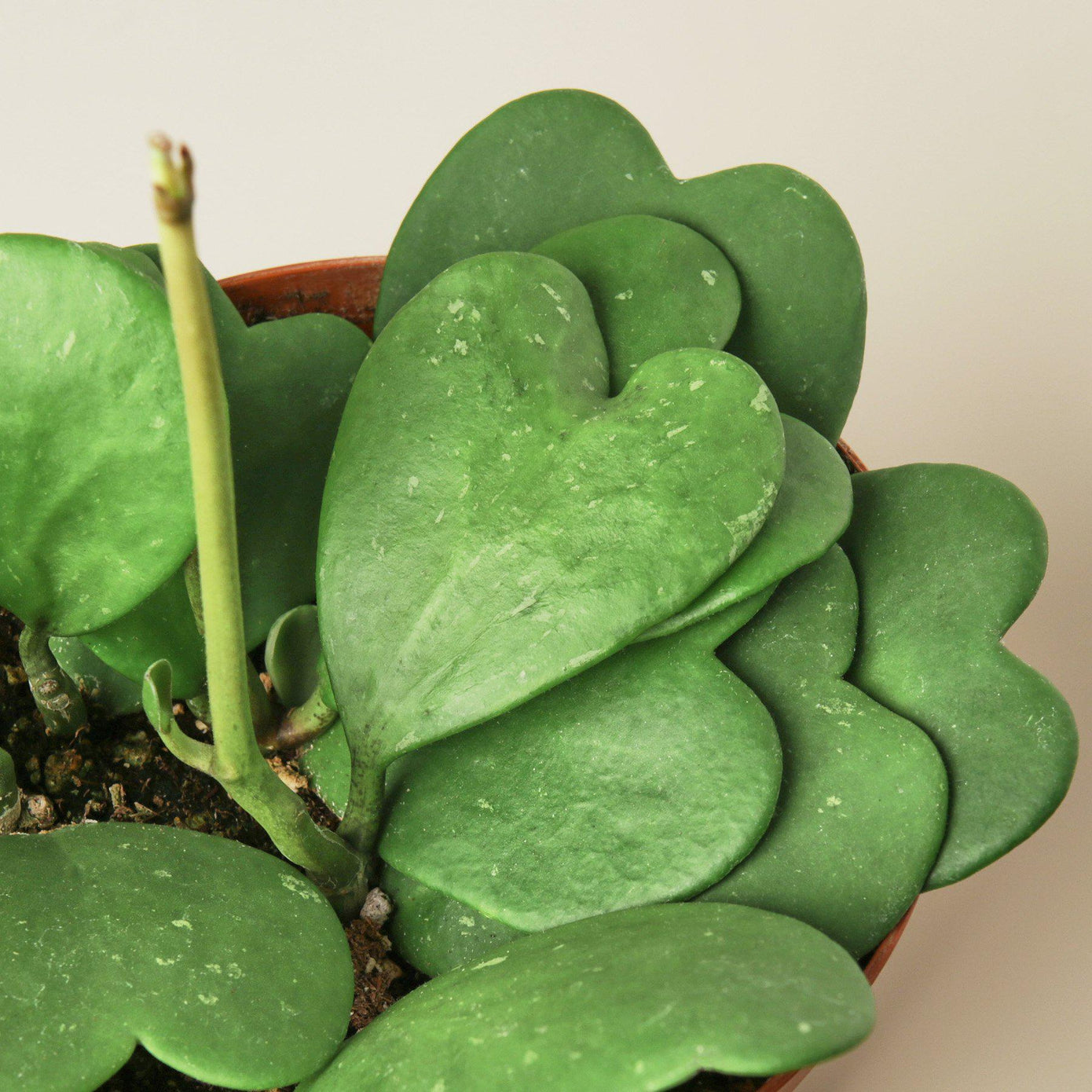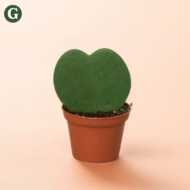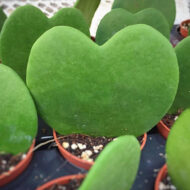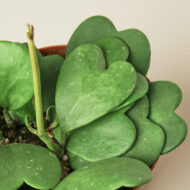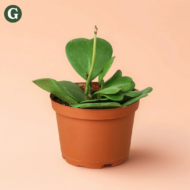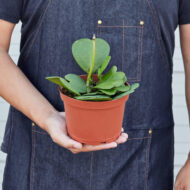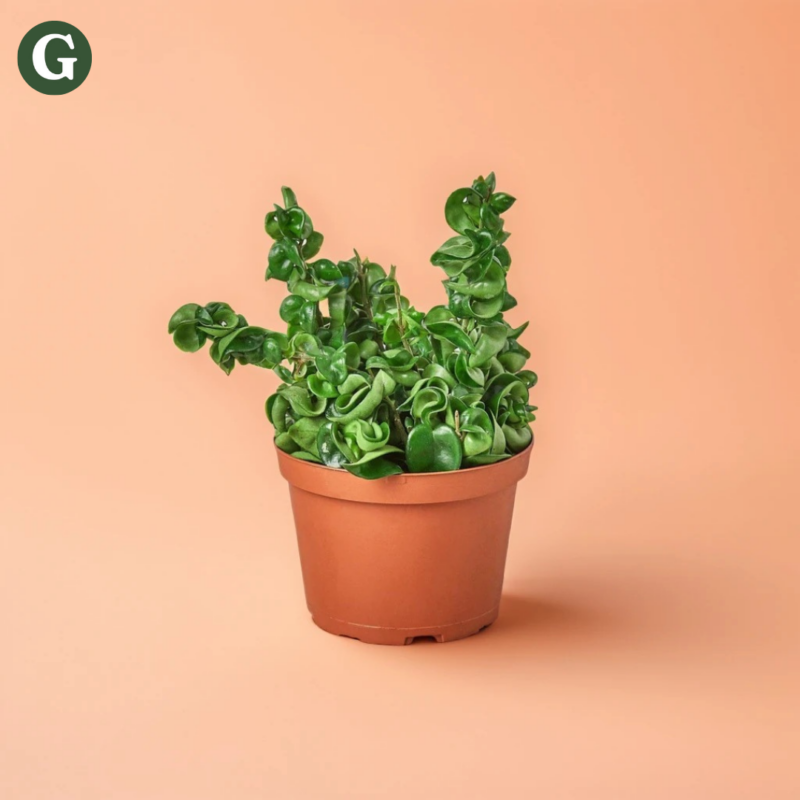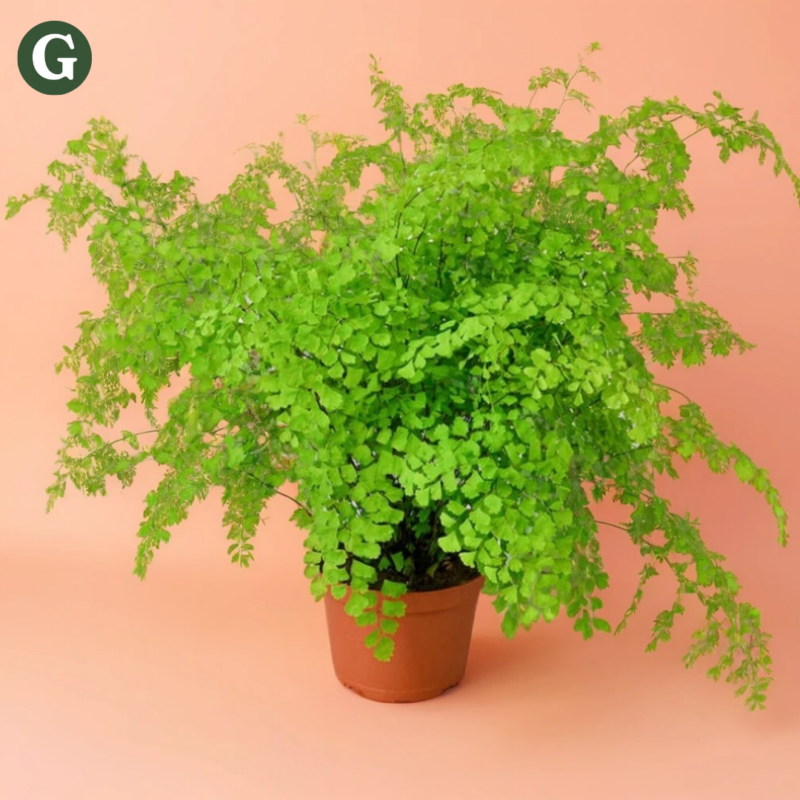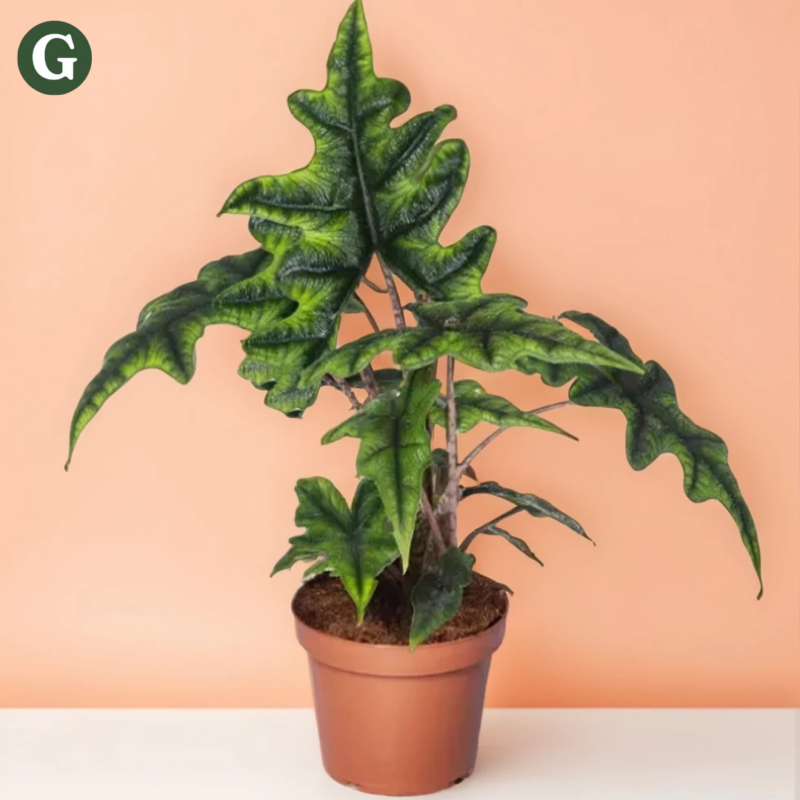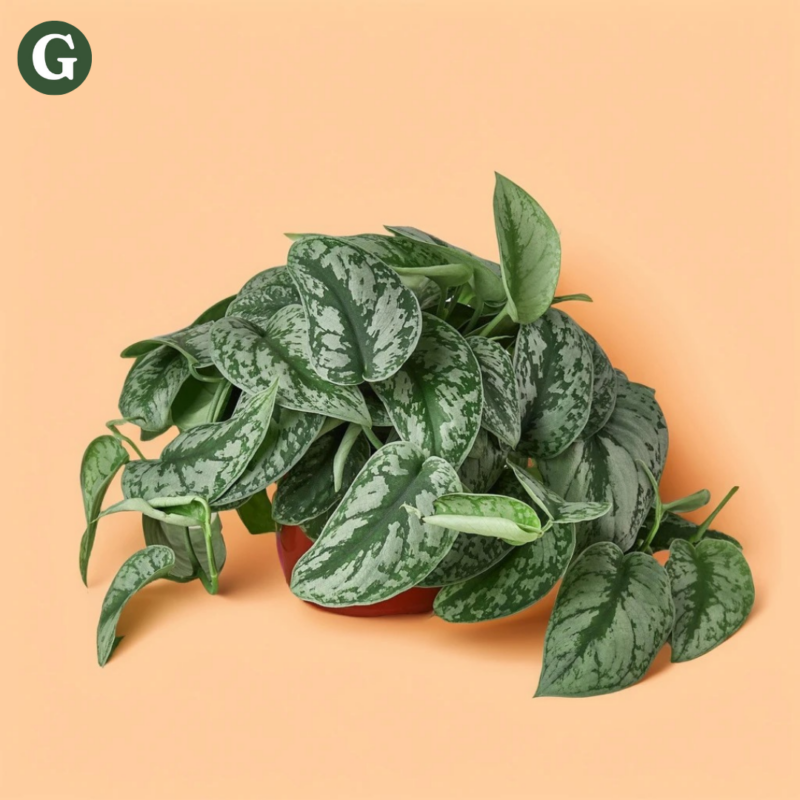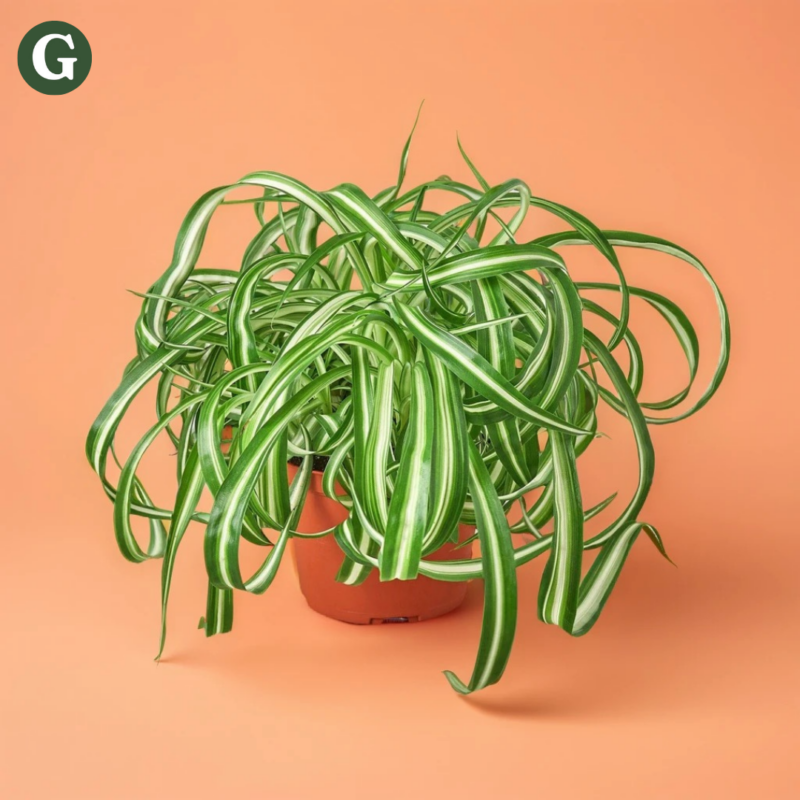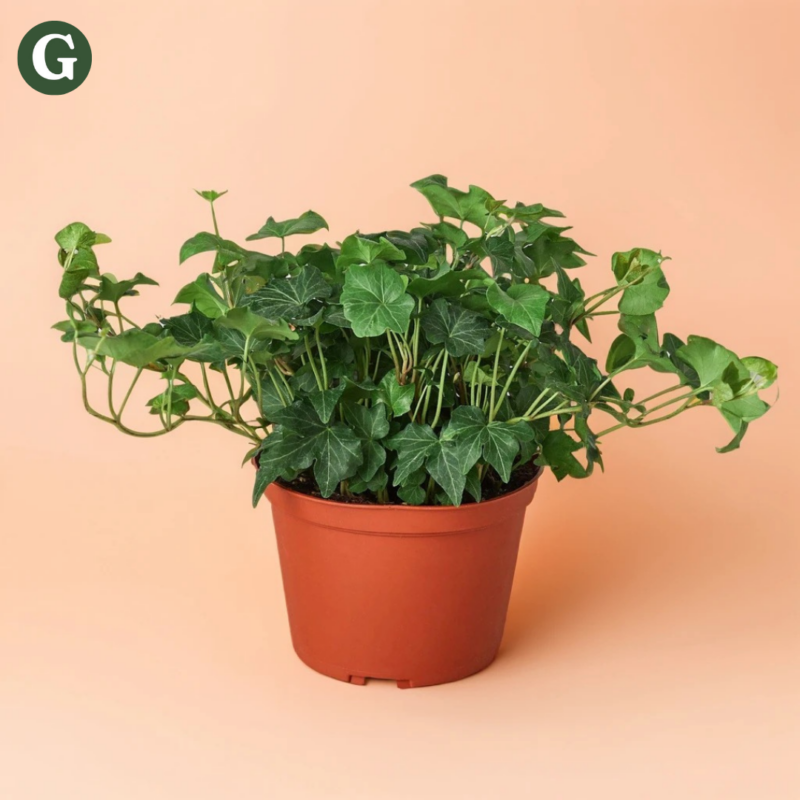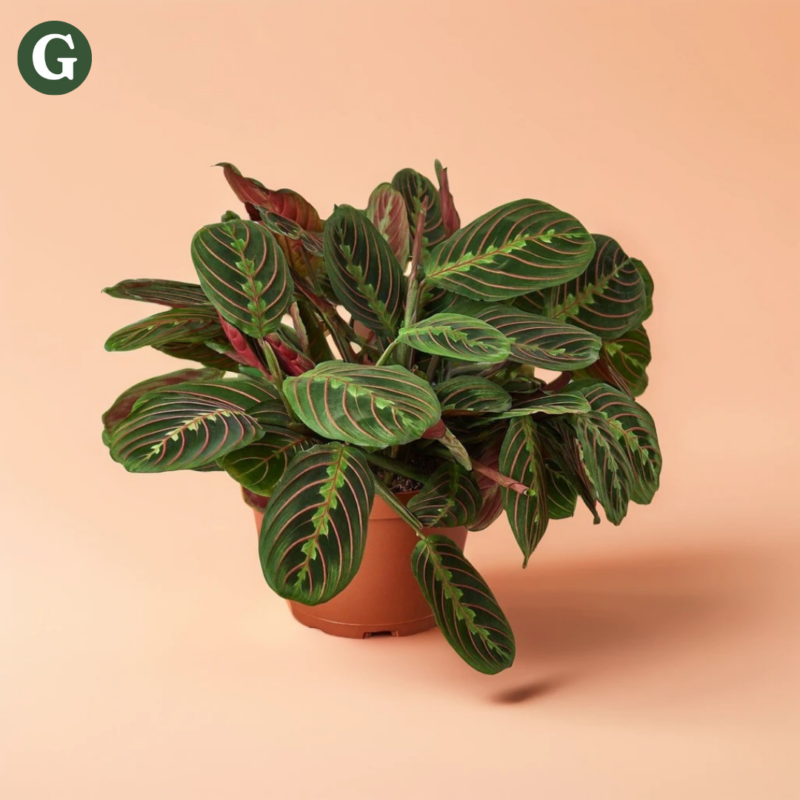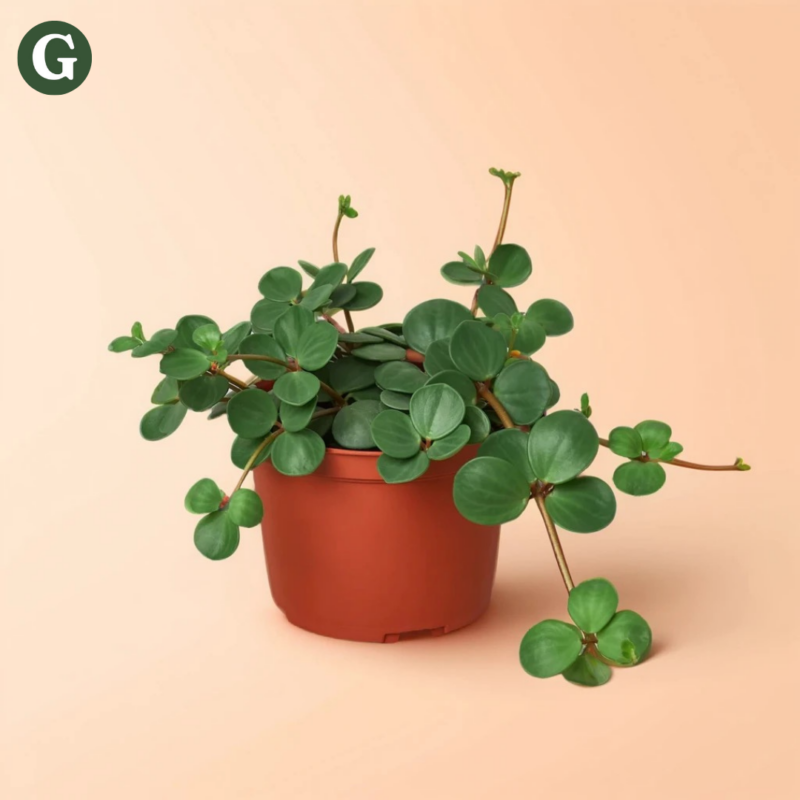Hoya Sweetheart
Botanical Name: Hoya kerrii
Common Name(s): Hoya Sweetheart, Sweetheart Hoya, Valentine Hoya, Heart Leaf Hoya
The Hoya Sweetheart is a charming and popular variety of Hoya, known for its distinctive heart-shaped leaves. Often given as a gift for Valentine's Day or other romantic occasions due to its heart-shaped foliage. This popular succulent-like plant has earned a place in the hearts of houseplant lovers around the world. Despite its compact size, it is a low-maintenance and visually striking addition to any plant collection.
The Hoya Sweetheart is best recognized for its thick, waxy, heart-shaped leaves that can be deep green or variegated with creamy white or yellow patterns. The leaves are glossy and smooth, giving the plant a polished, elegant look. While the plant is often sold as a single heart-shaped cutting, when it matures and begins to vine, it can develop trailing stems with clusters of additional heart-shaped leaves. The growth habit of the plant is slow, and it can take several years to reach its full potential. However, when it does begin to vine, it can make a beautiful addition to hanging baskets, shelves, or plant trellises.
One of the key reasons people are drawn to the Hoya Sweetheart is its ease of care. As a succulent, it is relatively drought-tolerant and doesn’t require frequent watering. The plant prefers bright, indirect light but can tolerate some direct sunlight. Too much direct sunlight, however, can scorch its leaves, so it’s best to place it in a location where it gets plenty of light without being exposed to harsh midday sun. In lower light conditions, the plant may grow more slowly, but it will still survive and retain its characteristic heart-shaped leaves.
The Hoya Sweetheart is highly adaptable to indoor conditions and is well-suited to the average humidity levels found in most homes. However, like many Hoyas, it does appreciate a bit of extra humidity. If you want to encourage more robust growth or prevent the edges of the leaves from browning, placing the plant near a humidifier, on a humidity tray, or in a bathroom with good natural light can help boost humidity levels.
Watering the Hoya Sweetheart requires a balanced approach. As a succulent, it prefers to dry out between waterings, and overwatering can lead to root rot. Allow the top 1–2 inches of soil to dry before watering again. During the growing season (spring and summer), you can water the plant more frequently, but in the dormant months (fall and winter), reduce watering to avoid excessive moisture that could cause root rot. A well-draining potting mix, such as cactus or succulent mix, is ideal for this plant.
While the Hoya Sweetheart is known for its attractive foliage, it can also bloom under the right conditions. In the right environment, this plant can product cluster shaped flowers with a fragrant, waxy texture, typically in shades of white, pink, or red. However, flowering is rare for this plant unless it is given enough warmth, humidity, and light to encourage blooming.
The Hoya Sweetheart is a relatively slow-growing plant, and even mature specimens typically stay compact, making it ideal for small spaces, desks, or as a cute tabletop plant. If grown as a vine, it can eventually reach lengths of 3–6 feet (90–180 cm), making it suitable for hanging baskets or cascading down shelves.
Note: The Hoya Sweetheart is non-toxic to pets, making it a safe option for homes with cats and dogs.
Care Insights & Expert Tips
- Avoid Disturbing the Roots: Hoya plants don't like their roots to be disturbed, so repot them only when necessary.
- Fertilize once a month: Feed this Hoya with a balanced liquid fertilizer diluted to half strength once a month during the growing season.
- Enjoy the rare flowers: The Hoya Sweetheart is known for its beautiful, fragrant flowers. To encourage blooming, provide plenty of bright light and avoid overwatering.
- Avoid drafts: Avoid placing this plant near cold drafts or air conditioning vents.
- Watch for pests: Watch out for pests like mealybugs and spider mites. Treat infestations promptly with insecticidal soap or neem oil.

Visit our plant care library
Find essential tips to keep your plants thriving, vibrant, and healthy.


